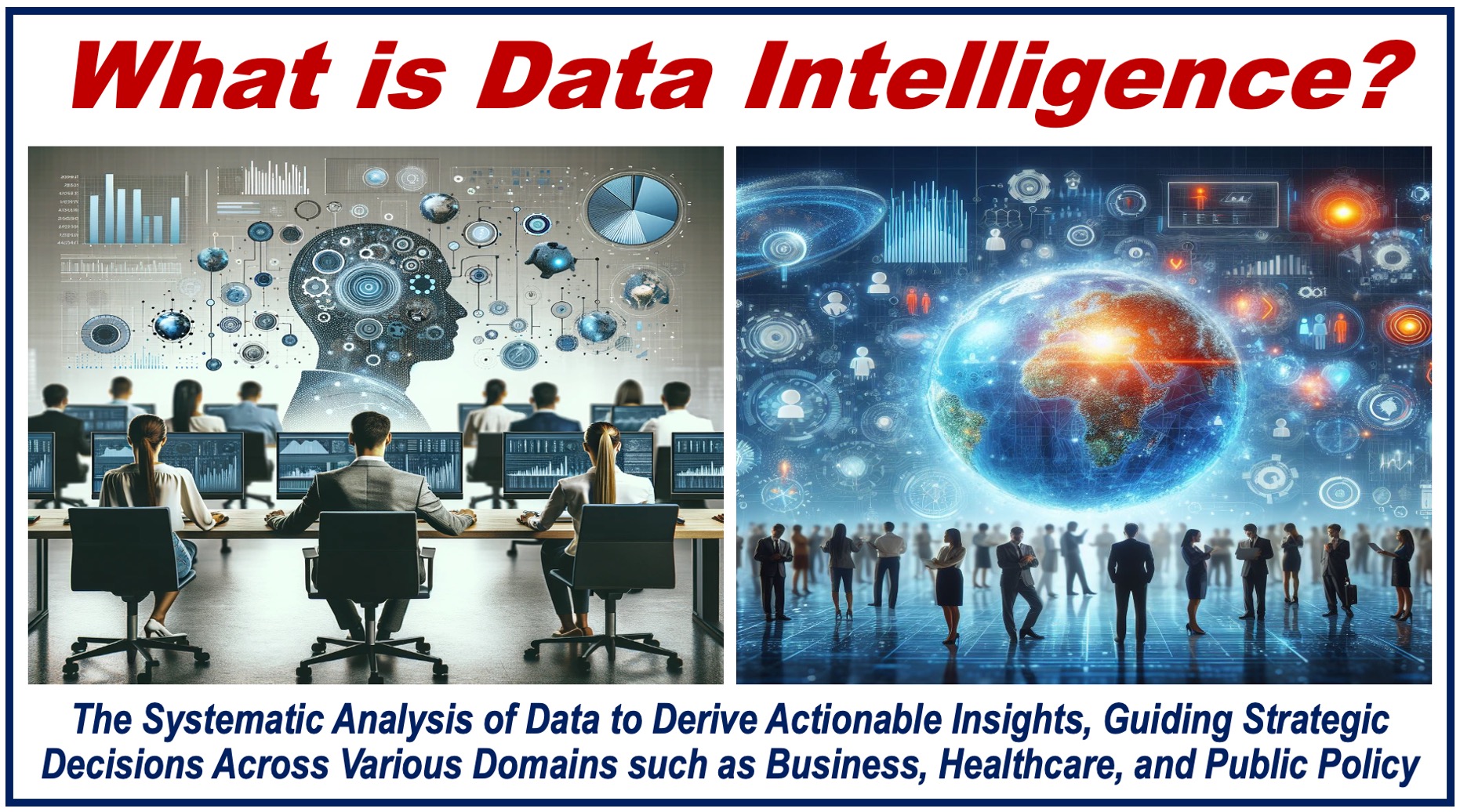Data Intelligence, at its core, is about turning raw data into meaningful information, that is, information that we can understand. This information can help us in our decision-making and strategic planning.
In today’s information age, data intelligence stands as a cornerstone, guiding decisions made by businesspeople, policymakers, scientists, educators, healthcare providers, financial analysts, marketing strategists, urban planners, and environmentalists, to name but a few.
Sisense Ltd. says the following about the term “data intelligence”:
“Data intelligence refers to all the analytical tools and methods companies employ to form a better understanding of the information they collect to improve their services or investments. Data intelligence focuses on analysis and interaction with information in a meaningful way to promote better decision-making in the future.”
“Apply AI (artificial intelligence) and machine learning to stored data, and you get data intelligence.”
Data intelligence – a compound noun
The term “data intelligence” consists of two words, it is a compound noun. Compound nouns have two or more words. So, let’s look at the meaning of each word that makes up this compound noun:
-
Data
Data is information collected for reference, analysis, or computation, often in numbers, text, or images.
-
Intelligence
In this context, intelligence refers to the ability to acquire, understand, and utilize knowledge effectively. It does not denote personal smartness but indicates processed information’s value.

Data is ubiquitous
We are surrounded by data, it is everywhere, from the clicks on a website to the distance you walked or the number of steps you took in a day tracked by your smartwatch.
Until it is analyzed and interpreted, this data is only numbers and facts. Data intelligence involves gathering, analyzing, and using data effectively to answer questions, find solutions to problems and puzzles, and predict future trends.
Data analytics and data intelligence
Some people think the two terms have the same meaning. They don’t. One is a part of the other.
Data analytics is one key aspect of data intelligence. It uses statistical tools and algorithms to sift through data, identifying correlations, patterns, and trends.
Data analytics can help businesses in many ways. For example, it can help a company determine which products are selling well. A local government wanting to improve road safety can use data analytics to analyze traffic patterns.
Data visualization
Presenting data in a graphical or pictorial format so that it is easier to understand – data visualization – is a component of data intelligence.
Maps, graphs, and charts, for example, are some of the common tools we use to visualize data. They help us communicate complex information quickly and clearly.
Data intelligence use is widespread
It is not only tech companies and researchers who use data intelligence. It is increasingly used in a wide range of fields such as education, healthcare, finance, retail, logistics, agriculture, energy, public safety, and more.
In healthcare, for example, it can help improve patient care or predict disease outbreaks. In finance, it has been used to detect fraud and identify investment opportunities.
Final thoughts
Data intelligence can provide actionable insights, that is, insights into things we can act upon. It can help companies, governments, and other organizations make informed decisions, discover new opportunities, and minimize risks.
In today’s data-driven world, it is a vital tool. It transforms raw data into actionable knowledge.
